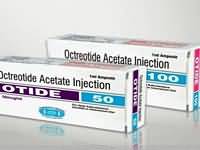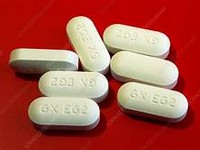octreotide

CLINICAL USE
Relief of symptoms of gastroenteropancreatic endocrine tumours and acromegalyDOSE IN NORMAL RENAL FUNCTION
50 micrograms – 1.2 mg dailyPHARMACOKINETICS
DOSE IN RENAL IMPAIRMENT
GFR (mL/MIN)
DOSE IN PATIENTS UNDERGOING RENAL REPLACEMENT THERAPIES
IMPORTANT DRUG INTERACTIONS
Potentially hazardous interactions with other drugsADMINISTRATION
Reconstition
_Route
SC, IVRate of Administration
IV bolus with ECG monitoringComments
IV: sodium chloride 0.9% to a ratio of not less than 1:1 and not more than 1:9OTHER INFORMATION
SC: to reduce local discomfort, warm to room temperature before injectionFor multiple injections, use different sites Patients with reduced renal function have been shown to have a reduced clearance of the drug (75 mL/minute vs. 175 mL/minute).
See how to identify renal failure stages according to GFR calculation
See how to diagnose irreversible renal disease
Home








